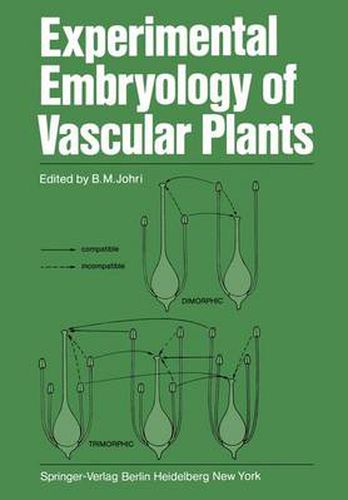Readings Newsletter
Become a Readings Member to make your shopping experience even easier.
Sign in or sign up for free!
You’re not far away from qualifying for FREE standard shipping within Australia
You’ve qualified for FREE standard shipping within Australia
The cart is loading…






This title is printed to order. This book may have been self-published. If so, we cannot guarantee the quality of the content. In the main most books will have gone through the editing process however some may not. We therefore suggest that you be aware of this before ordering this book. If in doubt check either the author or publisher’s details as we are unable to accept any returns unless they are faulty. Please contact us if you have any questions.
A long time ago botany used to be regarded as the scientia amabilis, the friendly science, eminently suitable for leisured amateurs. Since then, and particularly in this century, it has grown tremendously in its importance and in its intimate contacts with various other disciplines of science, some of which, like plant genetics and plant physiology, at one time indeed used to be included under the broad term botany. In spite of the fact that such subjects have expanded into major scientific fields of their own, botany, the mother science, continues to maintain its central place: this is because it deals with plants which constitute one of the most vital life-supporting systems of this planet. Furthermore, interacting and benefiting from advances made in other sciences, it has steadily progressed in a number of areas. Experimental embryology of vascular plants is one such field where spectacular advances have been made in recent years. The time is therefore particularly opportune for the publication of an authoritative book on the subject. It is very appropriate that the book has been planned and edited by Professor B. M. Johri, one of India’s foremost botanists, whose contributions in embryology, plant morphology and morphogenesis are internationally known. He was closely associated over a number of years with Professor P. Maheshwari, the great botanist and embryologist, to whom the book is dedicated.
$9.00 standard shipping within Australia
FREE standard shipping within Australia for orders over $100.00
Express & International shipping calculated at checkout
This title is printed to order. This book may have been self-published. If so, we cannot guarantee the quality of the content. In the main most books will have gone through the editing process however some may not. We therefore suggest that you be aware of this before ordering this book. If in doubt check either the author or publisher’s details as we are unable to accept any returns unless they are faulty. Please contact us if you have any questions.
A long time ago botany used to be regarded as the scientia amabilis, the friendly science, eminently suitable for leisured amateurs. Since then, and particularly in this century, it has grown tremendously in its importance and in its intimate contacts with various other disciplines of science, some of which, like plant genetics and plant physiology, at one time indeed used to be included under the broad term botany. In spite of the fact that such subjects have expanded into major scientific fields of their own, botany, the mother science, continues to maintain its central place: this is because it deals with plants which constitute one of the most vital life-supporting systems of this planet. Furthermore, interacting and benefiting from advances made in other sciences, it has steadily progressed in a number of areas. Experimental embryology of vascular plants is one such field where spectacular advances have been made in recent years. The time is therefore particularly opportune for the publication of an authoritative book on the subject. It is very appropriate that the book has been planned and edited by Professor B. M. Johri, one of India’s foremost botanists, whose contributions in embryology, plant morphology and morphogenesis are internationally known. He was closely associated over a number of years with Professor P. Maheshwari, the great botanist and embryologist, to whom the book is dedicated.